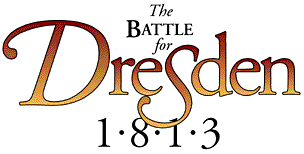

![]()
Basic Game Rules Zone of Control: Clarification Their is no zone of control across a major river (Elbe river) hexside except at bridges. Combat; Terrain Effects: Clarification Should read: Infantry units in a town, city or suburb hex do not have to attack adjacent enemy units . . . Artillery; Line of Sight: Correction Blocking terrain consists of woods, city, town/suburb, elevated hexes higher than both units, steep slope hexsides and Gross Garten hexes. The LOS illustration is incorrect. There should be a "Yes" in the hex directly to the right of the artillery unit. The Effects of Rain On Terrain: Clarification/Change During a heavy rain turn, treat minor rivers as major rivers and treat streams and the Landgraben as minor rivers. For each heavy rain turn, the effects of heavy rain on terrain last for two turns. In the basic game, once the heavy rain begins, the effects of heavy rain on terrain never end. When optional weather is used, a marker is placed on the Game-Turn Record Track on the turn after the first heavy rain turn. For each subsequent heavy rain turn, advance the marker two turns. The marker indicates the last turn of heavy rain effect for terrain only. Night Game-Turns: Clarification There is no combat or advance after combat during a night Game-Turn. Units are not required to move. A unit in an enemy ZOC may leave its first hex without penalty only if the hex it enters is not in the same enemy ZOC as the one it left. Suburb, town and city hexes count as two hexes for calculating the distance from an enemy unit. Fortress Artillery Three-Hex Range: Deletion Under hex 2414, hex 2717 is four hexes away and is not a targetable hex. Movement of Reserve Units: Clarification For reserve movement, the six-hex distance from an enemy unit is calculated just as it is with GTM. Advanced Game Rules How Command Affects Reserve Units: Clarification This rule supercedes the basic game rules for Movement of Reserve Units. Units in reserve may not move at all unless an army command point is used. Expending an army command point allows all the units in reserve (for that army) to move normally, i.e., as if not in reserve (they still must maintain a six-hex distance from any enemy unit). Units that enter the map as reinforcements in reserve move normally "for free" the turn they arrive (maintaining their reserve status). Recovery From Demoralization: Correction Example: At the start of the second day, place the French ICv Corps morale marker at 12 on the morale track. One unit of that Corps is permanently eliminated; two units are reduced (one is on the map and one is in the units available for reorganization box). Move the marker down the track 5 points for a new starting total of 7. Defeat of the Old Guard: Addition Each time any of the French Old Guard units listed below suffers a retreat as a result of combat, immediately reduce the morale level of each French Corps on the map by three points (including the Imperial Guard's). The following Old Guard units only cause this morale reduction: Curial, Michal and Old Guard Artillery. Allied Units Combat and Movement Rules: Addition Allied attacks involving units of different nationalities shift the combat odds one to the left on the CRT. Allied units of different nationalities may not end their movement in the same hex.
Optional Game Rules The Pirna/Konigstein Reinforcements: Clarification Reorganization may take place for eliminated units but not if the enemy force marker is in the same box as the friendly force marker. Set Up: Addition For Scenario II, move the starting locations of both sides up one box number, i.e., The French start in box 2 and the Allied force in box 3. |
|
Terrain Effects Chart Elevated Slope Hexside: Correction The Cost to Trace Command should be: None. City Hex: Correction The Effects on Combat for a City Hex should read: Same as Town/ Suburb hex plus defender shifts the final combat odds one to the left. Minor River Hexside: Addition The Effects on Combat should read: Same as Stream hexside, plus attacker halved if attacking . . . Stream/Landgrabben Hexside: Change The Effects on Combat: Defender shifts the final combat odds one to the left if attacked exclusively through a hexside. Footnote 1 should read: Bombarding artillery negates the hexside it is firing through for itself: i.e., the artillery is not halved/defender does not shift the combat odds.
Counter Sheets
Scenarios I and II
Scenarios I and III
|
|